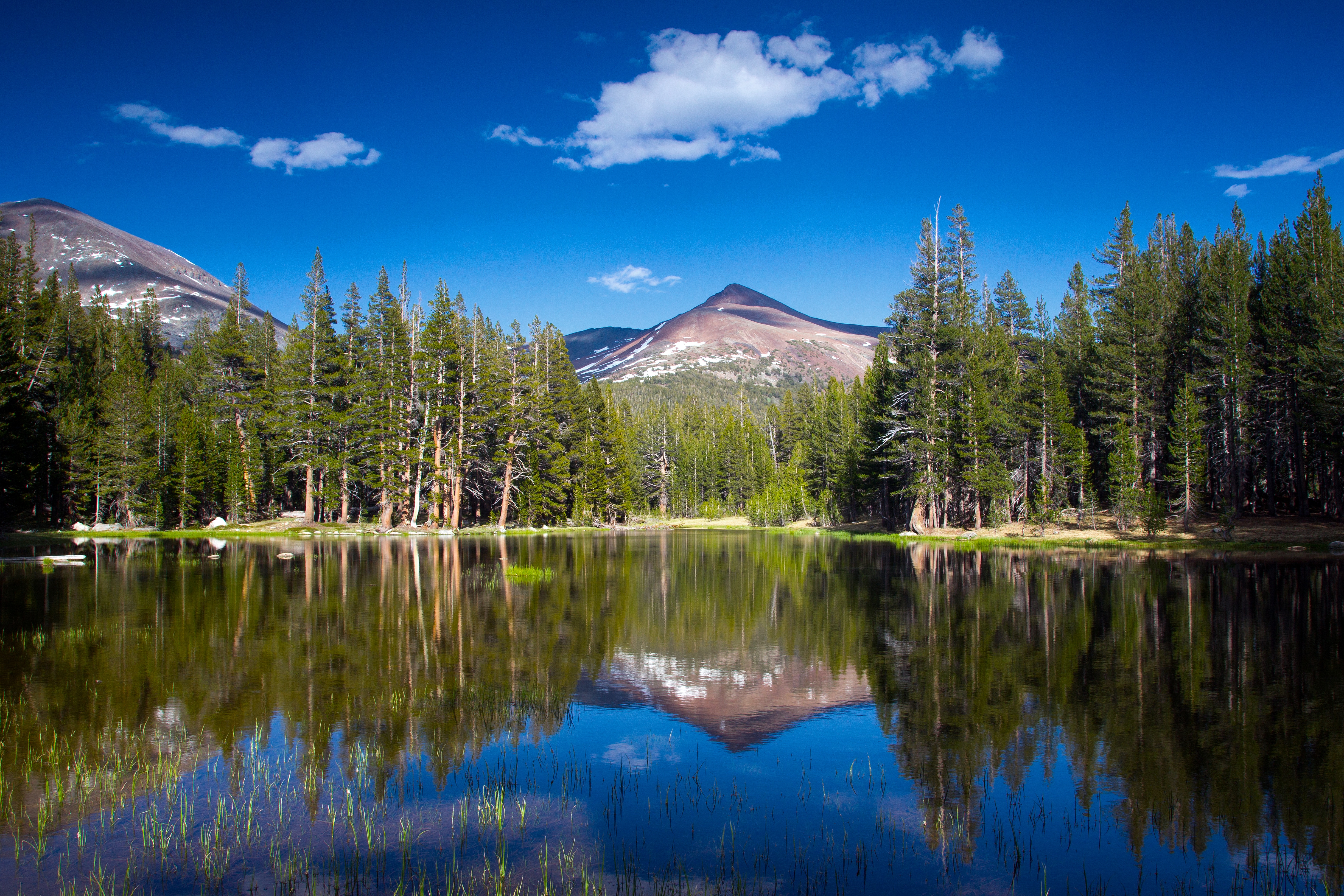The following list is designed for a non-guided backpacking trip in Yosemite. If you’re going with a commercial group, check with the guide company to see what items they provide. REI offers guided backpacking trips in Yosemite, which include much of the gear you need. But for those looking to take on the adventure themselves, this list serves as a great starting point for planning your trip.
Included in this list are the Ten Essential Systems you should have on every backcountry trip: navigation; sun protection; insulation; illumination; first-aid supplies; fire starter; repair kit and tools; nutrition; hydration; emergency shelter. To learn more, see our Ten Essentials article.
Equipment
- Backpack that’s large enough to hold a bear canister
- Pack raincover
- Small daypack (optional)
- Tent with guylines and repair sleeve
- Tent footprint (optional)
- Sleeping bag (15°–29°; or suitable for the season you go)
- Sleeping pad
- Whistle (plus signaling mirror)
- Multifunction watch with altimeter (altimeter feature is optional)
- Knife or multi-tool
- Compass
- GPS (optional)
- Map(s) and route description or guidebook
- Trekking poles (optional)
- LED headlamp with extra batteries
- Water filter and backup treatment system
- Stove, fuel and repair kit
- Matches or lighter
- Cookset, dishes, bowls, utensils, cups (measuring/drinking)
- Bear canister
- Repair kit for mattress; duct tape strips
- Fire starter (for emergency survival fire)
Clothing and Footwear
- Wicking, quick-drying underwear
- Wicking, quick-drying sports bra
- Wicking, quick-drying long underwear
- Wicking, quick-drying T-shirt and long-sleeve shirt
- Quick-drying pants
- Quick-drying shorts (optional)
- Fleece jacket or vest, or insulated jacket or vest
- Fleece pants (optional)
- Waterproof/breathable rain jacket
- Waterproof/breathable rain pants
- Bandana or Buff
- Sun-shielding hat or ball cap
- Winter hat
- Gloves or mittens
- Hiking boots or hiking shoes suited to terrain
- Socks (synthetic or wool) plus spares
- Gaiters (optional)
- Sandals (for fording streams and relaxing in camp) or water shoes
- Swimwear (optional, but highly recommended)
Personal Items
- Nitrile-dipped gloves (optional, to grip cables if you hike up Half Dome)
- Sunglasses
- Water bottles (3) or hydration reservoirs
- Sunscreen
- Lip balm
- Toothbrush with cover, floss, biodegradable toothpaste
- Biodegradable soap
- Toilet paper
- Sanitation trowel
- Hand sanitizer
- Women’s hygiene items
- Personal wipes
- Plastic zip-top bags
- Insect repellent
- First-aid kit (see our First-Aid Checklist)
- Quick-drying towel
- Spare eyeglasses or contact lenses
- Medications
- Camera or helmet cam and extra memory cards (optional)
- Binoculars (optional)
- Cell phone (don’t rely on service)
- Satellite communicator / personal locator beacon (optional)
- Field guide(s); star identifier (optional)
- Journal, pen and e-reader or reading material (optional)
- Portable power device (optional)
- Fishing gear and permit(s) (optional; available at stores within the park)
- Credit card; small amount of cash
- National Parks pass (yearly pass available from REI.com)
- Wilderness permit
- Trip itinerary left with friend and under car seat
Food
Quantity varies depending on activity and length of trip.
- Breakfast (oatmeal, granola, freeze-dried breakfast, etc.)
- Lunch (bagels, summer sausage, cheese, smoked salmon, etc.)
- Dinner (pasta, couscous, rice, freeze-dried dinner, etc.)
- Snacks (cookies, GORP, jerky, candy bars, dried fruit, etc.)
- Energy gels
- Energy bars
- Electrolyte replacement drink mix
- Extra day’s supply of food
